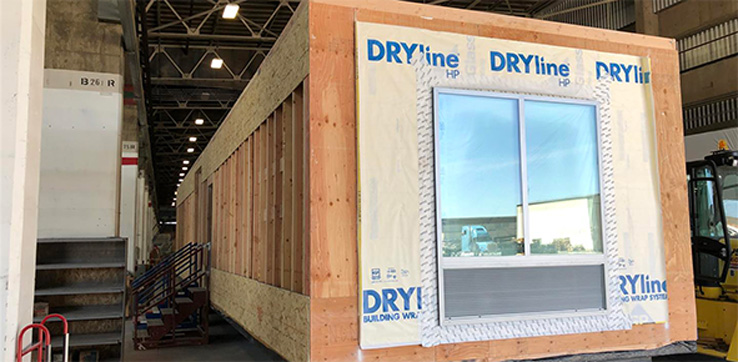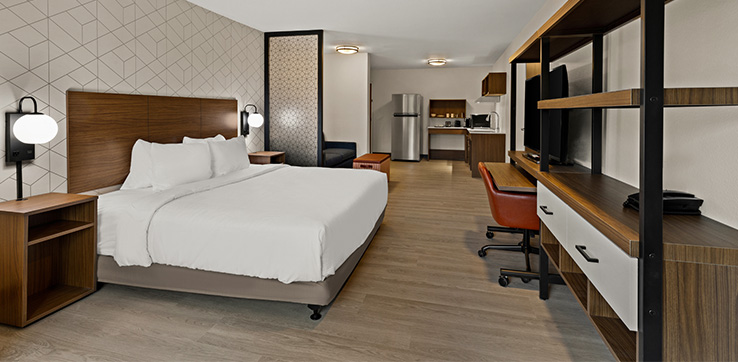Modular construction has an efficiency and convenience to it that has the power to revolutionize the construction industry. BRR has been working with clients to design spaces using modular for several years. A growing number of developers say that now is the time to build, despite building and labor prices at all-time highs.
In 2019 our team addressed Modular buildings in a blog post. However, and since then, several factors have impacted the market for these types of buildings, including the global pandemic.
Here are several factors to consider if modular construction is one of the potential delivery strategies for a project.
Supply Chain Impacts
The current state of several supply chains is adding complexity to an already complicated situation, causing modular projects to become more critical of lead time considerations. One of the difficult aspects of modular construction is the procurement of building materials.
Whereas traditional construction allows for adequate lead time so that materials can be purchased in a standard sequential order, the speed of modular construction requires a majority of materials to be purchased in bulk prior to unit fabrication. Pandemic-related lockdowns have often delayed orders. Backups at shipping ports have hampered the delivery of materials to manufacturing plants and project sites. Therefore, considering the current state of global manufacturing and shipping, it’s not as easy to maintain large inventories of materials.

With projects being built on-site, contractors can be more nimble and adjust the project’s schedule accordingly. For instance, in modular construction, the delay of even a sink fixture could result in the delay of all modules from the factory floor, while a site-built project could continue on with less delay.
Modular manufacturers began to scale up their capacity as the pandemic hit, and because of the many challenges associated with the economy, some manufacturers eventually had to close their doors permanently. Currently, there are not enough manufacturers to meet the demand. Owners and project managers should ensure conversations with modular manufacturers occur early; these conversations can often help to alleviate the production capacity concerns.
Project Timeline Impacts
Typically, modular construction offered the benefit of speed to market. Today, many developers are now questioning the benefit of modular construction versus site-built projects. Many manufacturers face challenges completing orders prior to six to twelve months out. And, if the project experiences permit or fixture-related delays that postpone the original start date, manufacturers might move the modular order to their next available timeslot. In some cases, waiting for the next available timeslot can add an additional six to twelve month delay. As a result, flexibility in modular production is typically extremely limited and can result in strict limitations on the design, construction, and ownership teams.
Location of the Project
Commonly, modular manufacturing plants are not located in major metro areas and instead are located in a different part of the country than the project site. As a result, it is important to take into consideration how the modules will be transported from the factory to the project location. Depending on the size of the modular unit, road closures, oversized load trucks, and guide cars may be needed. Considering current gasoline and diesel prices, transportation costs can generate a large expense. It is critical that shipping, transportation, and volatility costs are incorporated in the project budget. This will leverage the full benefits of speed to market and construction cost savings when utilizing modular construction.

Understanding Jurisdictions
Inspections are a crucial component of maintaining safety for building occupants. Ensuring consensus by the local jurisdiction and authority over modular building components is a critical factor to be determined early on. The location of production of modular units depends on which modular manufacturer is engaged and its plant availability. This leads to the possibility of the production occurring in a different state than where the project site is located. Building inspectors normally do not inspect outside of their jurisdiction, and therefore tend to not travel to isolated manufacturing plants for inspections. These inspections and permitting process are one aspect of modular construction that can complicate the communication with local jurisdictions. State and local regulations vary greatly related to modular construction. To streamline these processes, some states such as California have required pre-application meetings and periodic project team touch-bases. Therefore, we recommend scheduling a pre-application meeting with state and local jurisdictions in every state prior to beginning a modular project. This often helps to streamline communication and avoid severe delays or additional expenses to a project.
Other Available Options
Even with current labor shortages, modular construction continues to gain popularity in the industry. Some clients have limited the scope of their modular approaches, such as implementing panelized framing systems. Instead of being a fully modular concept, panelized framing is a hybrid between full site built versus full modular buildings. This approach allows contractors to capitalize on cheaper labor costs and allows for more flexibility in component erection and field installation. The panelized system is more efficient to build, inspect, and ship.
As the industry adjusts to current market forces, modular construction will likely continue to evolve. The benefits and time-to-market savings are appealing for developers exploring modular strategies and given the right market conditions, it can pay off in project cost savings. A wholistic evaluation of each project’s conditions, goals, and scope will help to determine if modular construction is the most efficient approach to deliver a successful project.
About the Authors:
Culin Thompson, AIA, LEED Green Assoc., joined BRR in 2017 and works in our Seattle office. His experience in hospitality, housing, and retail market analysis and urban planning brings a unique perspective to our hospitality team. Day to day, Culin designs for a range of hotel brands and retail clients to develop comprehensive construction documents and entitlement packages. His knowledge of financial pro forma analysis and feasibility reports allows him to integrate client financial directions with effective design. Email him.
Jacob Henley, AIA, LEED AP, graduated from Kansas State University with a Master of Architecture degree. Jacob has 10 years of professional experience and works on our internal hospitality studio. Jacob has worked with multiple hotel brands and franchisees on properties in markets across the U.S. Day to day, Jacob manages projects through all phases, from design development, through construction document production and construction administration. Email him.




